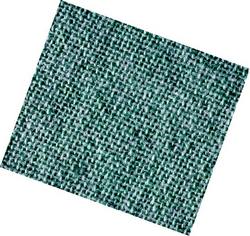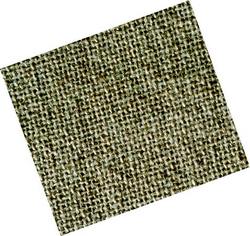By Nancy Higgins, Interior Design Group Sullivan-Schein

Carpeting is harder to keep clean than nonporous, hard-surface flooring, and cannot be reliably disinfected, especially after spills of blood and body substances. Several studies have documented the presence of diverse microbial populations, primarily bacteria and fungi, in carpeting. Cloth furnishings pose contamination risks similar to those of carpeting in areas of direct patient care and areas where contaminated materials are managed (i.e., dental operatories, laboratories, instrument processing areas). For these reasons, carpeted flooring and furnishings upholstered with fabric should not be used in these areas.
If you want to research this further go to: www.cdc.gov/oralhealth/infectioncontrol/faq which took this passage from the CDC Guidelines for Infection Control in Health-Care Settings – 2003
Cleaning Hard Flooring:
Source: www.cdc.gov/mmwr/preview/mmwrhtml/rr5217a1.htm Guidelines for Infection Control in Health-Care Settings – 2003
Housekeeping Surfaces
The majority of blood-contamination events in dentistry result from spatter during dental procedures using rotary or ultrasonic instrumentation. Although no evidence supports that HBV, HCV, or HIV have been transmitted from a housekeeping surface, prompt removal and surface disinfection of an area contaminated by either blood or OPIM are appropriate infection-control practices and required by OSHA.
Floors should be cleaned regularly, and spills should be cleaned up promptly. An EPA-registered hospital disinfectant/detergent designed for general housekeeping purposes should be used in patientcare areas if uncertainty exists regarding the nature of the soil on the surface (e.g., blood or bodily fluid contamination versus routine dust or dirt). When housekeeping surfaces are visibly contaminated by blood or OPIM, prompt removal and surface disinfection is appropriate infectioncontrol practice and required by OSHA.
Manufacturers' instructions for preparation and use should be followed. Making fresh cleaning solution each day, discarding any remaining solution, and allowing the container to dry will minimize bacterial contamination. Preferred cleaning methods produce minimal mists and aerosols or dispersion of dust in patient-care areas.
Strategies for decontaminating spills of blood and other bodily fluids differ by setting and volume of the spill. Blood spills on either clinical contact or housekeeping surfaces should be contained and managed as quickly as possible to reduce the risk of contact by patients. The person assigned to clean the spill should wear gloves. Visible organic material should be removed with absorbent material (e.g., disposable paper towels discarded in a leak-proof, appropriately labeled container). Nonporous surfaces should be cleaned and then decontaminated with either an EPAregistered hospital disinfectant effective against HBV and HIV or an EPA-registered hospital disinfectant with a tuberculocidal claim (i.e., intermediate-level disinfectant). However, if such products are unavailable, a 1:100 dilution of sodium hypochlorite (e.g., approximately cup of 5.25% household chlorine bleach to 1 gallon of water) is an inexpensive and effective disinfecting agent (113).
Recommendations for Environmental Infection Control in Health-Care Facilities Source:
http://www.cdc.gov/mmwr/preview/mmwrhtml/rr5210a1.htm
Rationale for Recommendations
As in previous CDC guidelines, each recommendation is categorized on the basis of existing scientific data, theoretic rationale, applicability, and possible economic effect. The recommendations are evidence-based wherever possible.
These standards reflect a consensus of expert opinions and extensive consultation with agencies of the U.S. Department of Health and Human Services. Compliance with these standards is usually voluntary. However, state and federal governments often adopt these standards as regulations. Certain recommendations have two category ratings (e.g., Categories IA and IC or Categories IB and IC), indicating the recommendation is evidence-based as well as a standard or regulation.
Rating Categories – Recommendations are rated according to the following categories:
Category IA: Strongly recommended for implementation and strongly supported by well-designed experimental, clinical, or epidemiologic studies.
Category IB: Strongly recommended for implementation and supported by certain experimental, clinical, or epidemiologic studies and a strong theoretic rationale.
Category IC: Required by state or federal regulation, or representing an established association standard. (Note: Abbreviations for governing agencies and regulatory citations are listed where appropriate. Recommendations from regulations adopted at state levels are also noted. Recommendations from AIA guidelines cite the appropriate sections of the standards.)
Category II: Suggested for implementation and supported by suggestive clinical or epidemiologic studies or a theoretic rationale.
Unresolved issue: No recommendation is offered. No consensus or insufficient evidence exists regarding efficacy.
III. Carpeting and Cloth Furnishings
A. Vacuum carpeting in public areas of healthcare facilities and in general patient-care areas regularly with well-maintained equipment designed to minimize dust dispersion. Category II
B. Periodically perform a thorough, deep cleaning of carpeting as determined by facility policy by using a method that minimizes the production of aerosols and leaves little or no residue. Category II
C. Avoid use of carpeting in high-traffic zones in patient-care areas or where spills are likely (e.g., operating rooms, laboratories, or intensive care units). Category IB
D. Follow appropriate procedures for managing spills on carpeting.
1. Spot-clean blood or body substance spills promptly. Category IC (OSHA: 29 CFR 1910.1030 § d.4.ii.A, interpretation) 2. If a spill occurs on carpet tiles, replace any tiles contaminated by blood and body fluids or body substances (307). Category IC (OSHA 29 CFR 1910.1030 § d.4.ii interpretation)
E. Thoroughly dry wet carpeting to prevent the growth of fungi; replace carpeting that remains wet after 72 hours. Category IB
From the Carpet and Rug Institute – Cleaning Carpet:
Carpet is often chosen because it helps cut down on noise, reduces light glare, and gives more of a cushion to stand on. Carpet can act as a trap for dirt, dust, and other particles that fall to the ground. With proper and frequent vacuuming (with the proper vacuum), these pollutants are then removed from the indoor environment before they become airborne or are tracked to other regions of the building. Unless carpet is vacuumed regularly and periodically cleaned, dirt builds up, abrades the fibers, and begins to spread. The carpet loses its initial appearance and resilience, tending to crush and mat down, making it appear worn out, even if there is not real pile loss. However, when carpets and other floorings are not cleaned and maintained properly, pollutants build up and get recirculated back into the air.
There is a big difference between cleaning carpet and maintaining carpet. Cleaning is the removal of apparent soil. For many commercial carpet owners, cleaning takes place irregularly, on an “as needed” basis. Soiling, however, is a cumulative process, which if allowed to go too far, cannot easily be reversed.
Maintenance, in contrast to cleaning, is a scheduled on-going process of soil removal designed to maintain carpet’s daily appearance at a consistent level of cleanliness.
The Carpet and Rug Institute recommends scheduled frequent deep cleaning to assist in the removal of residues and trapped soils. A customized comprehensive carpet care program consists of five elements:
1. Soil Containment – Isolation of soil entering the building using mats at entrances.
a. Outside mats should have a coarse texture, able to brush soil from shoes, and hold large amounts of soil in their pile.
b. Inside mats remove smaller particles of dirt as well as oils and other liquids that can be tracked in from outside. Mats that extend from 6 to 15 feet inside the entrance will trap 80% of the soil and moisture from the first five or six steps. The mats should be cleaned on a regular basis – more frequently than carpet.
2. Vacuuming – Scheduled frequency for removal of dry soil using a CRI approved “Green Label” vacuum. Vacuum each day in heavy traffic areas, including, entrances, corridors, main passageways. Vacuum every other day in light to medium-traffic areas, including private offices, conference rooms, administrative offices, break rooms, and rooms with limited use. Vacuum onec or twice a week in light traffic areas. For a list of approved vacuum cleaners go to the CRI website, www.carpet-rug.org
3. Interim Cleaning – Scheduled frequency appearance cleaning for all traffic areas
4. Restorative Cleaning – Scheduled frequency deep cleaning to remove residues and trapped soils.
There are some conditions where appearance change must be expected. In areas where the oily material from asphalt sealers is tracked into the building, carpet and other flooring may become yellowed over time. Check the traffic lanes often for slight dulling of color; as this indicates a build up of soil. It is virtually impossible to remove all of this material once it has penetrated the fiber of any carpet. Entrance mats and scheduled cleaning can reduce this phenomenon. Areas where large amounts of sandy soil enter the building may become dull in appearance over time.

This is due to abrasion of the fiber surface, affecting the reflection of light. Frequent vacuuming helps to minimize this problem. A thoughtfully designed and implemented maintenance program performed by qualified personnel, who are properly equipped and trained, is essential for optimal long-term performance.
There is one simple rule: If you don’t maintain it, you can’t expect it to stay clean.
Antimicrobial Treatments on Carpet:
Antimicrobial is a chemical treatment added to carpet to reduce the growth of common bacteria, fungi, yeast, mold, and mildew. This treatment is commonly applied after the carpet is made (often with yardage minimums and an upcharge), and it can wear off after repeated cleanings. Also, one should be aware that if you use antimicrobial carpet you should also use antimicrobial adhesive and seam sealer—an antimicrobial treatment won’t stop bacteria—it will resist it.

Conclusion
It is important to use the correct flooring in each area of a dental office. From the evidence on the Web sites for Center for Disease Control, OHSA, and the Carpet and Rug Institute, the clear and more healthy choice would be a hard surface in the treatment, sterilization, lab, and restrooms of a dental office. Now all you have to do is figure out which kind of hard-surface flooring to use!
